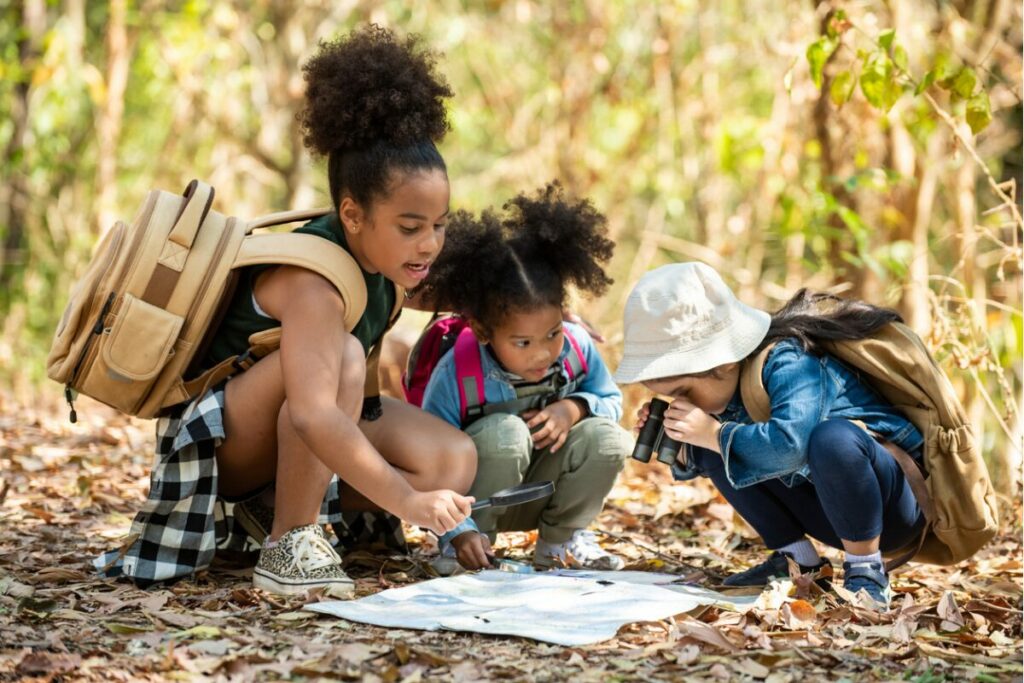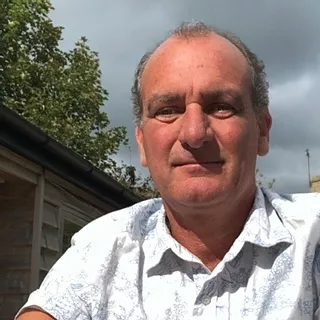If you were to frame where we’re at now, without over-categorizing it, our focus is on the “I,” the “We,” the “Place,” and the “Planet.”
Peter Williams, CEO, Curriculum for Life
Education Reimagined recently spoke with Peter Williams and Oliver “Oli” Williams, CEO and Project Coordinator (respectively) of Curriculum for Life, an organization driven “to equip young people to develop and thrive during and after their educational journey.” Curriculum for Life focuses on three streams of work: convening thought leaders, curriculum developers and practitioner specialists; curating and creating open source learning materials and curricular resources; and providing professional development for the optimal delivery of a “fully-fledged, adaptive curriculum framework that meets the needs of young people.”
Q: What inspired the creation of a non-academic-based open source curriculum?
Peter: There are a few original roots to this work that we put in the ground about 12 years ago, alongside a colleague who owns an educational business. His question was: “Why isn’t self awareness and leadership part of the education offered to young people?” This question jumpstarted our development of what soon turned into the Curriculum for Life—a curriculum focused on reflecting the global challenges we are facing as a society and the increasing calls for young people, practitioners, parents, and other generations coming of age to address them.
If you look at the world as a village, you’ll see we don’t really have our act together when it comes to delivering non-academic educational experiences. For too many young people, It’s fragmented, difficult to access, difficult to make sense of, and expensive.
To that end, we identified a number of issues that make a case for a coherent curriculum provision that supports metacognition and works alongside an academic curriculum. And, a curriculum that also has a presumption that timetables will shift as a new view of what education needs to be emerges.
More recently, democratizing access to this and having youth at the center of co-creating the curriculum has become a top priority. Non-academic curriculum is very different from academic curriculum. It requires the voices of youth to be strong and authentic. That shift rebooted our inspiration for this work.
The more we convene people with a shared interest, the more we see that, at some point, the world will have to do a better job of making a coherent provision for non-academic learning that’s present through the entirety of one’s educational journey, that folds into lifelong learning.
There’s a movement afoot that includes the likes of Education Reimagined and others, and we are fascinated to meet like-minded folks passionate about this work. We don’t know what the end result will be, but we’re stepping into a journey of change and invention and are renewed by the challenge of crystallizing this idea into something tangible and, ultimately, supporting young people to access opportunities they crave.
Q: What was important to you about including young people in the design?
Peter: The more we’ve listened to young people, the more dramatically it’s been illustrated to me how valuable and critical their voices are to this process.
Saying “young people don’t know what they don’t know, so why involve them?” is not a sufficient enough obstacle to exclude them. I think the co-intergenerational work that can take place around the reinvention of elements of the curriculum, offers the opportunity for a fantastic amount of knowledge to be transferred, shared, and understood.
To assume youth voice can’t be given a central place in all of this is a fallacy. In fact, it’s incredibly valuable to test and learn with young people. We also feel it would be pragmatic to include young people in their twenties who’ve been through university and can look back on their education. They can help us understand, now that they’re in the world of work, if more space is given to non-academic learning, what would that help?
It’s really exciting to have a variety of young voices represented, from ages 26 all the way down to the youngest kids, we’re able to interact with them to co-create opportunities and inform an ecosystem of learning.
Oli: We’re observing that while there’s a recognition, among educational rhetoric, that it’s all about the students, those are the voices that are often missing. They’ve always been missing from the design of curricula; the decision-making processes around not only what’s delivered but how it’s delivered and what would be in a curriculum; and what will suit the future needs of young people.
We, adults, have made a habit of determining the needs and setting the goals of young people without asking them, and we think that’s unsustainable. As an organization, we’re involving young people in the decision-making elements at all levels. We’re organizing in a sociocratic system, which is similar to how a social movement might organize itself. The system fosters the participation of stakeholder voices. We do this because we’re committed to organizing ourselves “prefiguratively.” In other words, being the change we want to see in the world regarding learner participation in educational decision making and curriculum design.
Q: What have you developed thus far on your way to creating a Curriculum for Life?
Peter: We recognize that there’s both a process and product element to what we’re doing. Right now, we’re in the process of generating what the curriculum will look like within a community and adopting sociocratic principles in order to responsively curate the best of what’s out there for addressing certain life challenges for young people. Those challenges will be represented by the fundamental questions and needs young people articulate.
And, if we can provide that taxonomy toward already available content: One, we won’t have to reinvent the wheel; and two, we’ll probably be building on great stuff that already exists or disseminating what is usable and effective.
There’s a whole process that will be part ongoing iterative development of curriculum and part development of a coherent curriculum that will be made up, over time, in a modular way. It will then be threaded into an end-to-end curriculum that meets the challenges of application, such as practitioner development, timetabling, and all of the things that we know people say get in the way of introducing an innovative or inventive curriculum.
If you were to frame where we’re at now, without over-categorizing it, our focus is on the “I,” the “We,” the “Place,” and the “Planet.”
Oli: Bridging the gap between that process and product, we’ve convened the three words: convene, curate, and create. Essentially, we’re convening the right people and the right voices in the room that need to be there to make this just, representative, and future-proof. We’re also researching and curating the excellent resources and innovations that are out there in the world that most people don’t know about, and will never know about, unless they’re guided towards them. And then, out of that, we’re creating an adaptive end-to-end curriculum.
It’s not a set curriculum. It will stay relevant and answer the fundamental questions and needs of young people and practitioners on an ongoing basis. It will also adapt as technology and the job market changes, and as new opportunities and challenges in a local community arise.
There’s a localized element to it where you will be able to adopt the curriculum creation process and draw on your community to make it fully relevant and tailored.
Q: What is one particular learning opportunity you would like to see all young people have access to?
Peter: Learning about learning. This is a topic that could cover anything from learning styles and preferences to double loop learning to multiple intelligences—all with the goal of enlightening a young person about the role learning plays in their life and the opportunities this brings.
We need to equip people to learn in the way that we are naturally oriented to learn, so that the path from unconscious incompetence to unconscious competence is built in as a life skill.
I don’t see anywhere in the world where I can get a group of young people and find resources that really walk through, with a skillful practitioner, what learning is about. If we are to respond to the challenges that face us and if employers are going to have creative, resourceful, courageous employees, then the best skill to develop in young people is how to learn and how to observe that learning.
What I hoped to give you in the answer here is an example of a modular piece that would be stretched back into the early years in a curriculum framework that is age-appropriate. Metacognition supports both more conventional academic learning and non-academic topics that are of equal or greater value. We want to provide a curriculum for these non-academic topics that is coherent and non-fragmented. If we can do that for practitioners in a way that is accessible to them and their young people, that is what success would look like for us.
Q: What are some of the big questions you are exploring right now that will advance your work?
Oli: Some questions that show up for me are: How do we foster and integrate youth voice and participation into systems which have never done so before? How do we unlearn habits around how we interact with young people—as teachers, thought leaders, curriculum designers—so we can work intergenerationally toward common goals? How do we get something like this Curriculum for Life into mainstream educational systems? And, how do you ensure complete open access to it?
Peter: Funding is always a challenge. To democratize access to what we’re creating, we will first need to generate revenue from those who can afford it. That is a problem we are still hashing out.
For the curriculum itself, we’re wrestling an octopus. If you imagine the number of pieces needed to relate to the whole of life, whether we’re talking about the planet, social entrepreneurship, emotional intelligence, applied leadership, or any number of other realms, there’s a very good reason no one has taken this on before. We have to have a development process in place that allows us to make sense of the choices we’re making along the way.
But, we do think that through the people we’re convening and the work that is already out there, we will generate something that is powerful.


